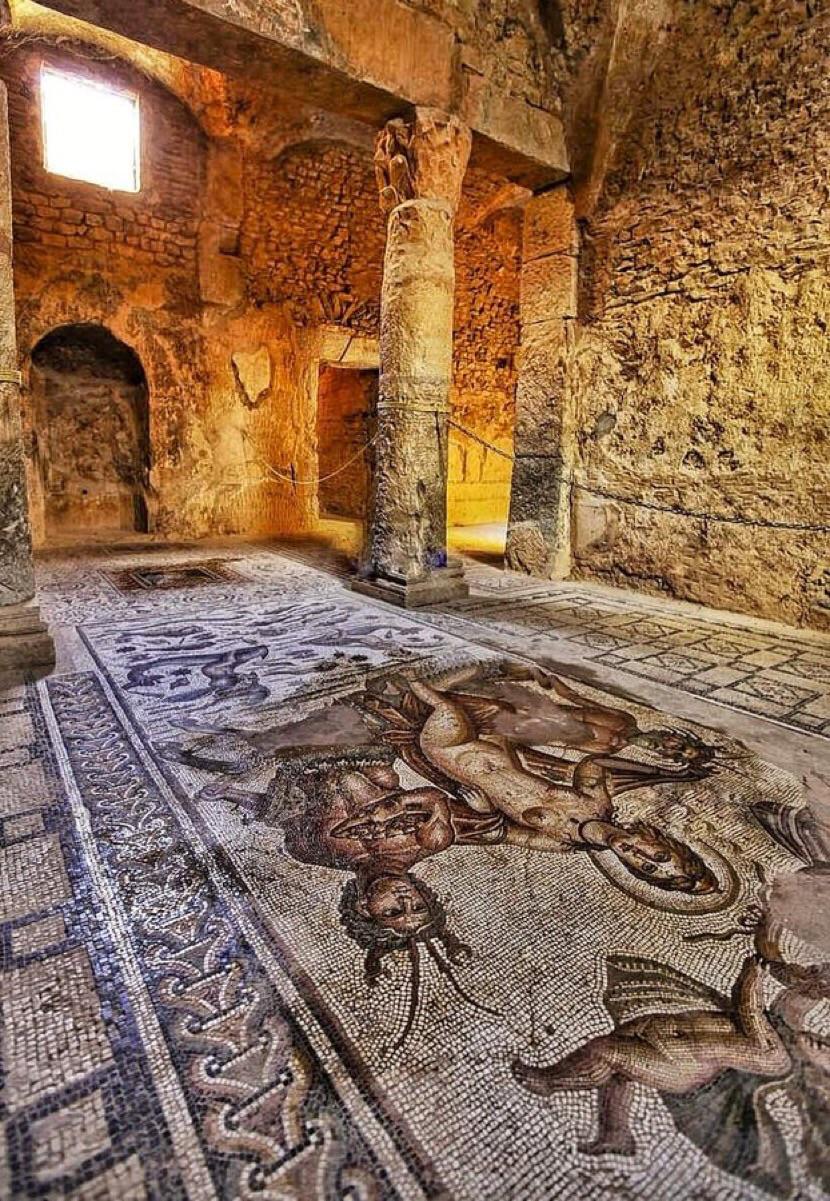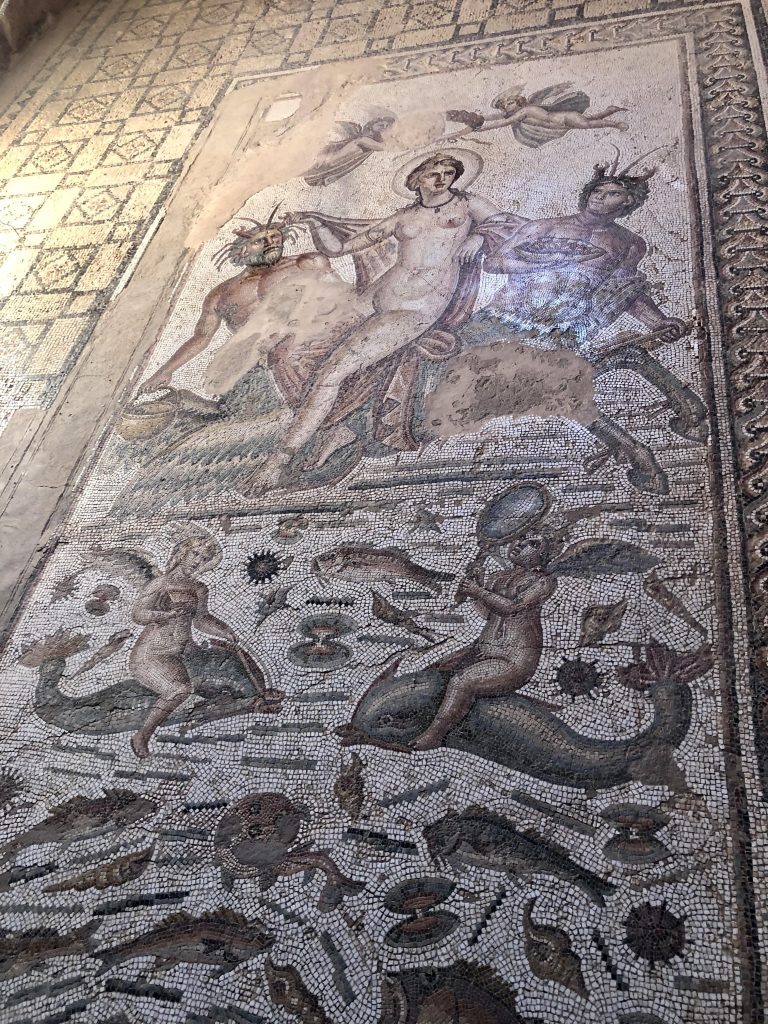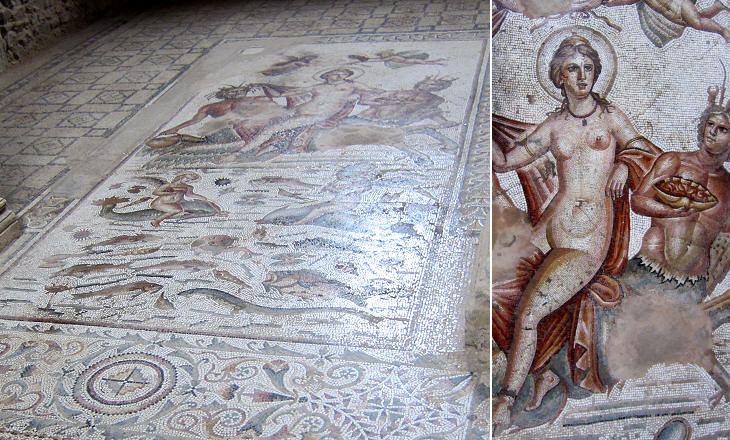Table of Contents
ToggleIntroduction to Bulla Regia
Nestled in the northwestern part of Tunisia, Bulla Regia is one of the most fascinating and well-preserved Roman archaeological sites in North Africa. Known for its unique underground villas, the ancient city offers a rare glimpse into the lives of Roman elites in this region. The site is particularly renowned for its stunning floor mosaics, which not only showcase Roman artistry but also provide insight into the luxurious lifestyles of the city’s wealthiest inhabitants.

The Magnificence of the Floor Mosaic
One of the standout features of Bulla Regia is the exquisite floor mosaic discovered in the villa of an aristocratic Roman family. This mosaic is a prime example of Roman craftsmanship, showcasing the meticulous artistry and technical skill of ancient craftsmen. The mosaic is composed of small, colorful tesserae arranged in intricate patterns and scenes, ranging from geometric designs to depictions of mythological creatures and animals. The level of detail and vibrancy in the mosaic is a testament to the wealth and sophistication of the villa’s owner.

In Roman society, such mosaics were more than decorative elements; they were a way of displaying power, prestige, and refinement. The mosaic floors of Bulla Regia were not just an artistic expression but also a symbol of the owner’s high social standing. Through these elaborate works of art, the villa’s inhabitants were able to project their status within the wider Roman world.
The Architecture of Bulla Regia
Bulla Regia is famous for its remarkable underground villas, which were designed to shield the residents from the intense heat of the Tunisian climate. These subterranean spaces, with their cool, shaded rooms, provided a comfortable living environment during the scorching summer months. The villas were intricately designed to maximize airflow and minimize direct sunlight, creating a luxurious retreat in an otherwise harsh climate.

The floor mosaics in these villas played a significant role in enhancing the environment. While they served as beautiful decorations, they also contributed to the atmosphere of opulence within these underground chambers. The use of vibrant colors and intricate patterns would have transformed the rooms into splendid spaces, reflecting the affluence and high status of the villa’s inhabitants. The mosaics, therefore, were not just aesthetic features but integral parts of the villa’s architectural design, enhancing the overall luxurious atmosphere.
Enduring Legacy and Cultural Significance
Today, the mosaics of Bulla Regia remain some of the best-preserved examples of Roman floor art in the world. Their survival through the centuries speaks to the enduring craftsmanship and cultural significance of Roman artistic traditions. The intricate designs and exceptional preservation of these mosaics offer a rare window into the lavish lifestyle of the Roman elite in North Africa, showcasing how art was used to express social status, wealth, and refinement.

Moreover, the floor mosaics of Bulla Regia continue to captivate visitors and scholars alike, providing a deeper understanding of Roman life and culture. They are not merely decorative objects but powerful symbols of the sophistication, artistry, and luxury that defined Roman society in this region. As visitors stand before these ancient mosaics, they are transported back in time to an era of Roman grandeur, where art and architecture were used to elevate the everyday experience to one of immense beauty and cultural significance.
Conclusion
The floor mosaics of Bulla Regia remain a remarkable testament to the artistic and architectural achievements of the ancient Romans in North Africa. Through their intricate designs and exceptional craftsmanship, they reveal the opulence of Roman domestic life and the cultural richness of the era. As we continue to study and admire these mosaics, we gain not only a deeper appreciation for Roman art and engineering but also a glimpse into the luxurious world of the Roman elite, whose legacies continue to inspire awe and admiration.

